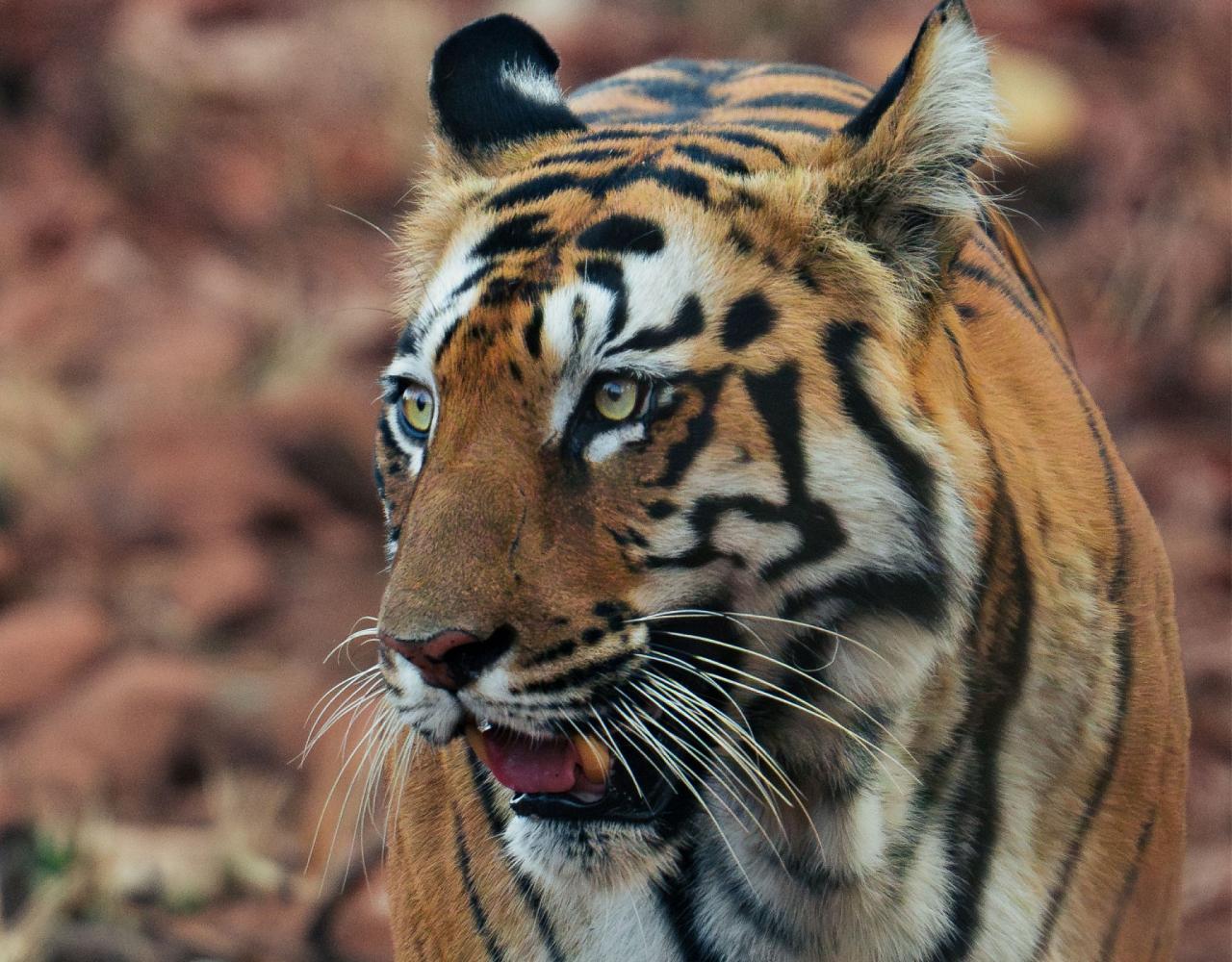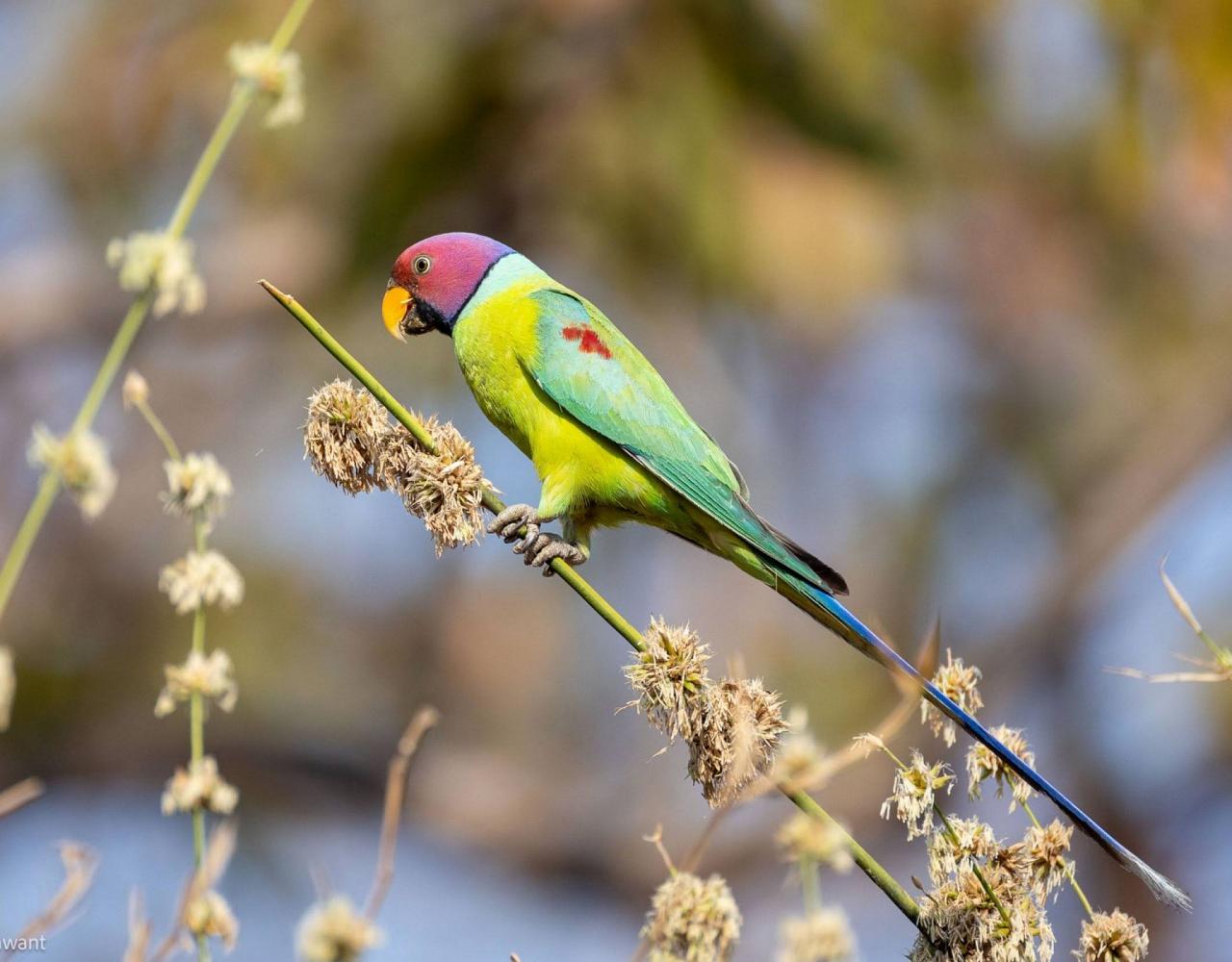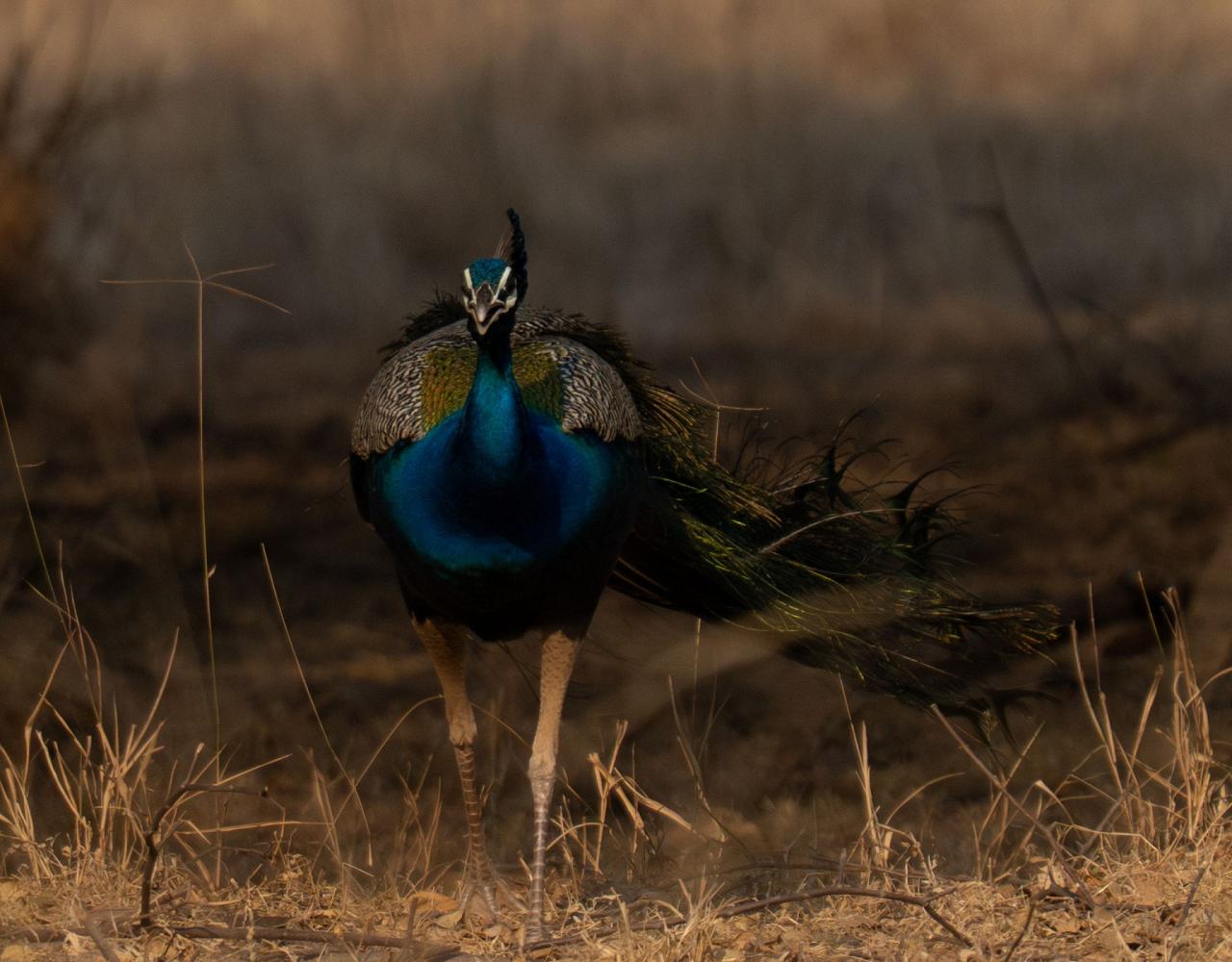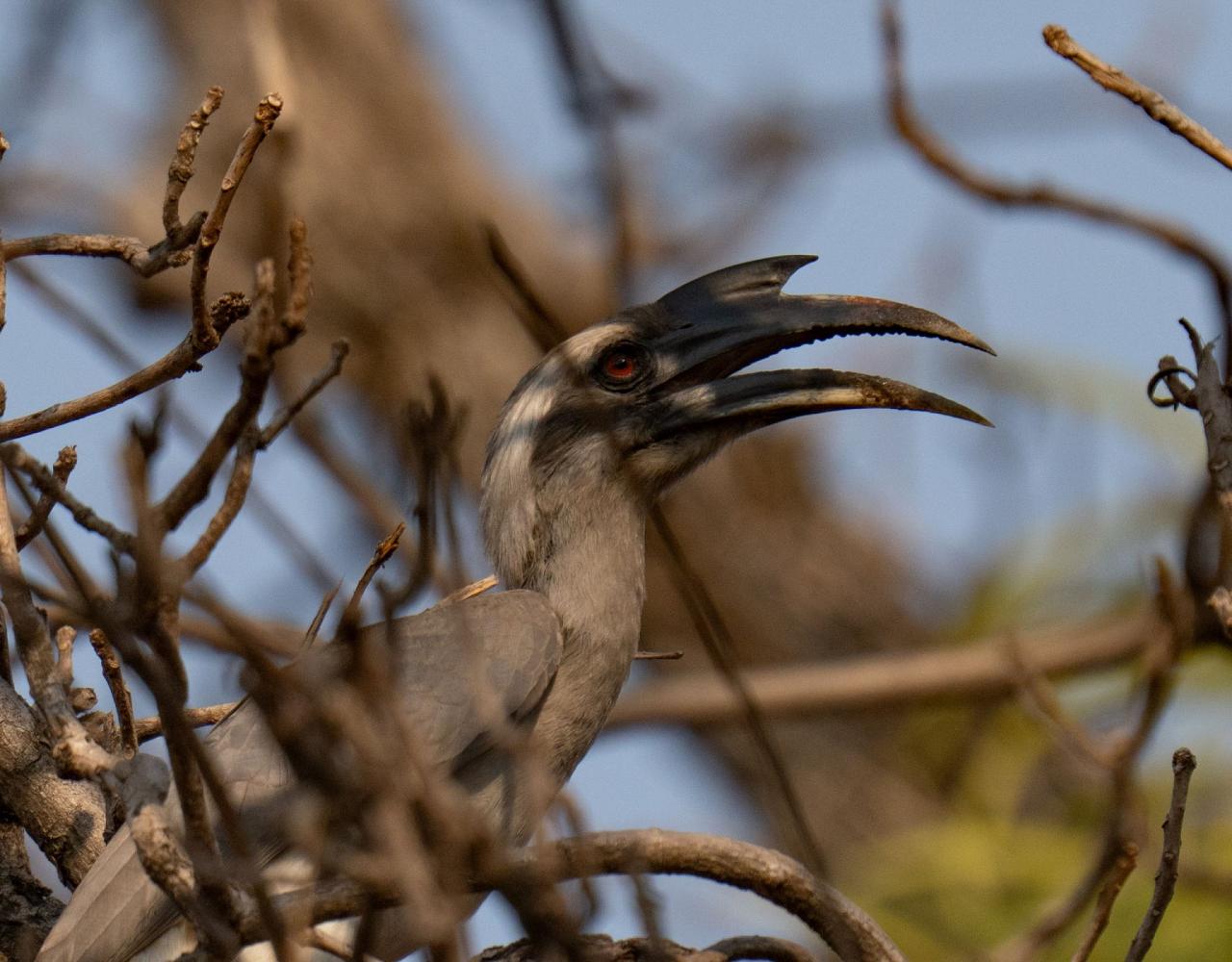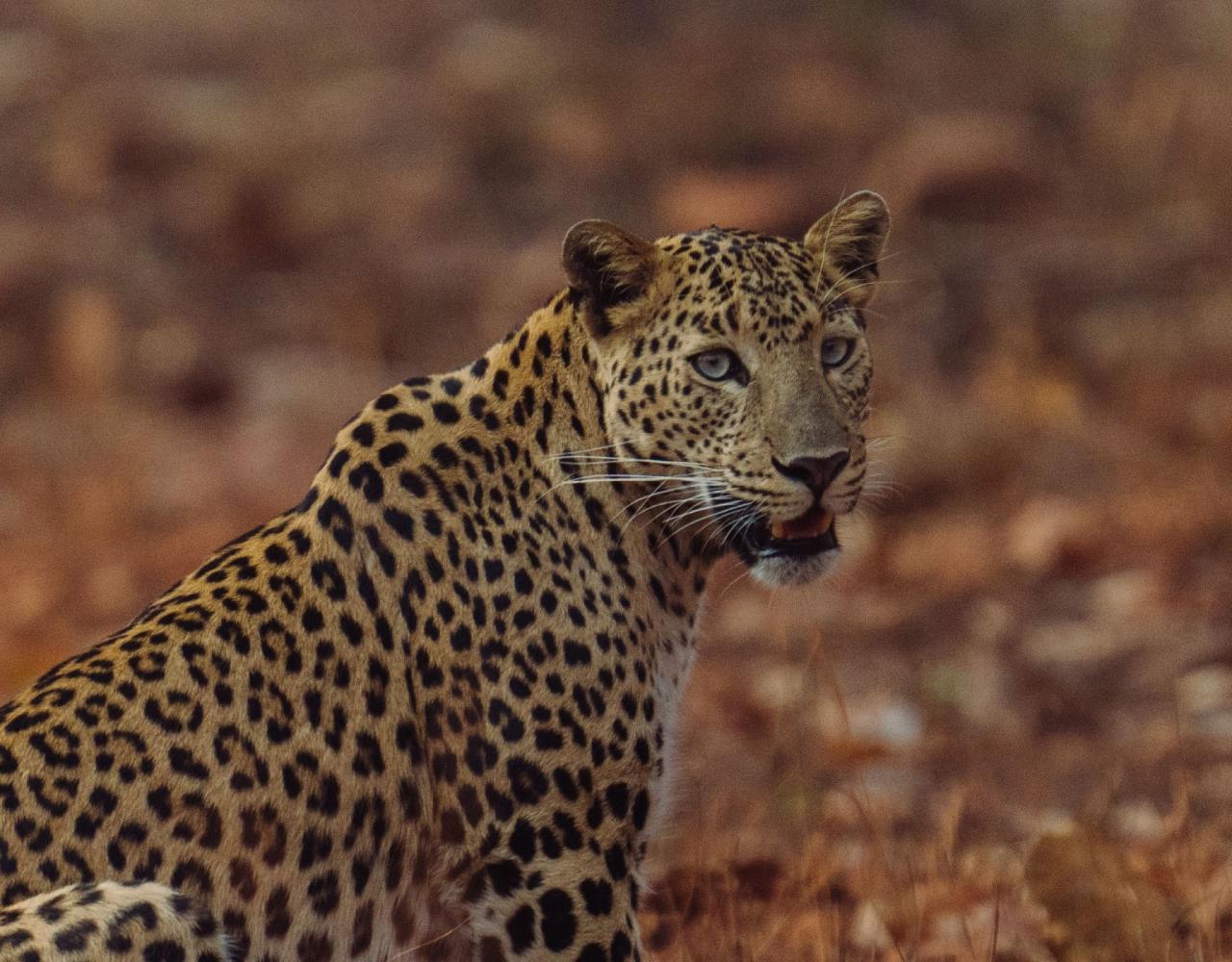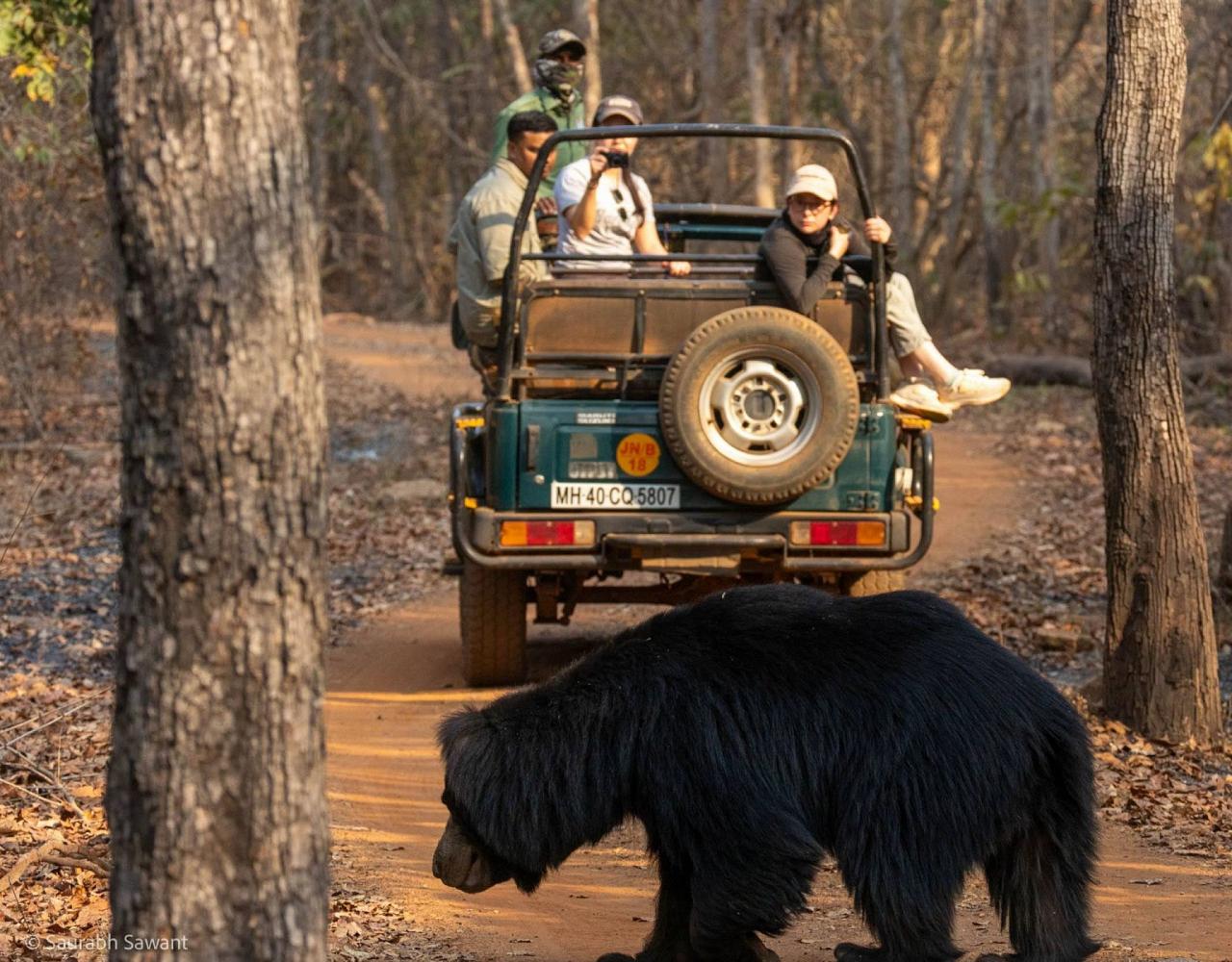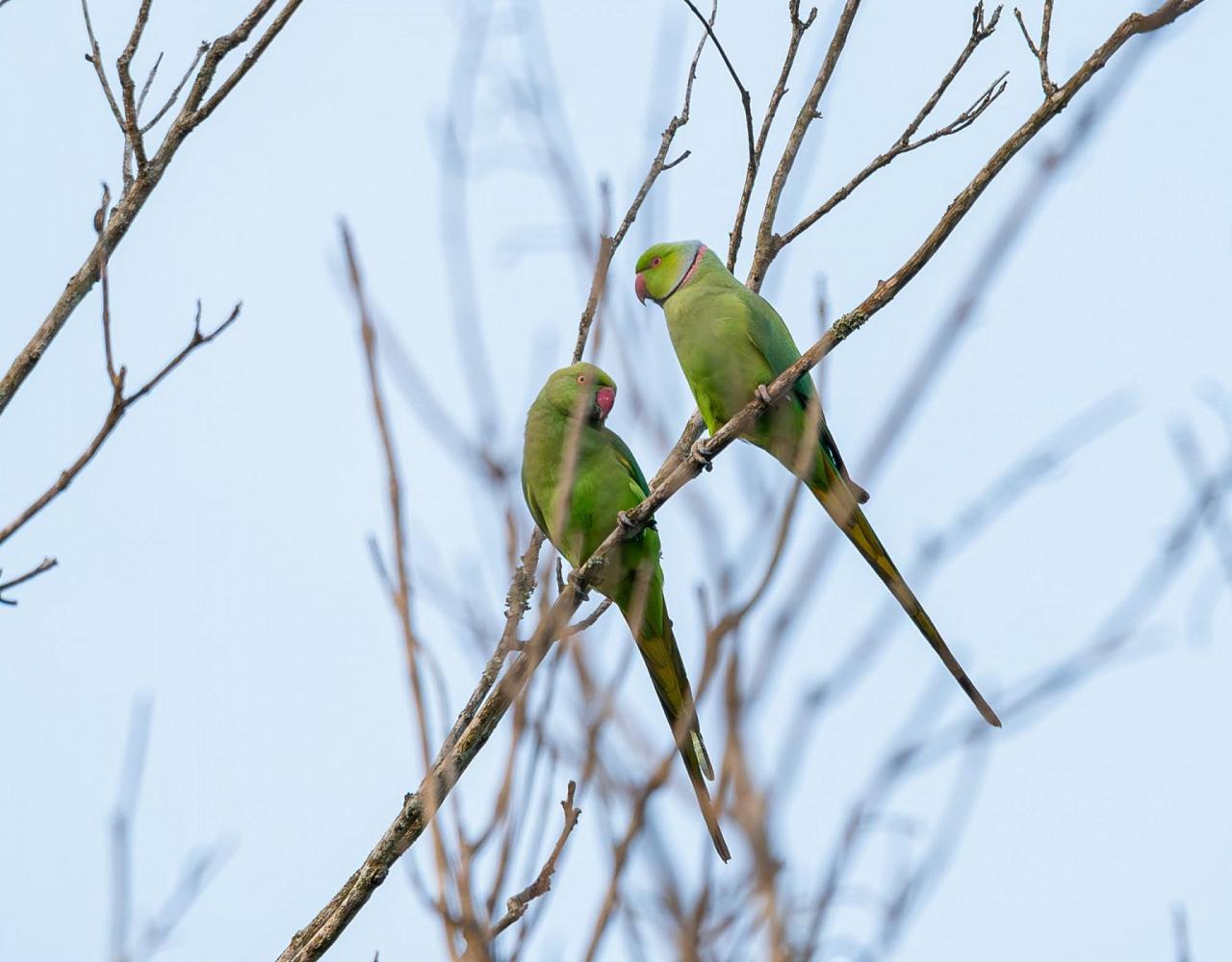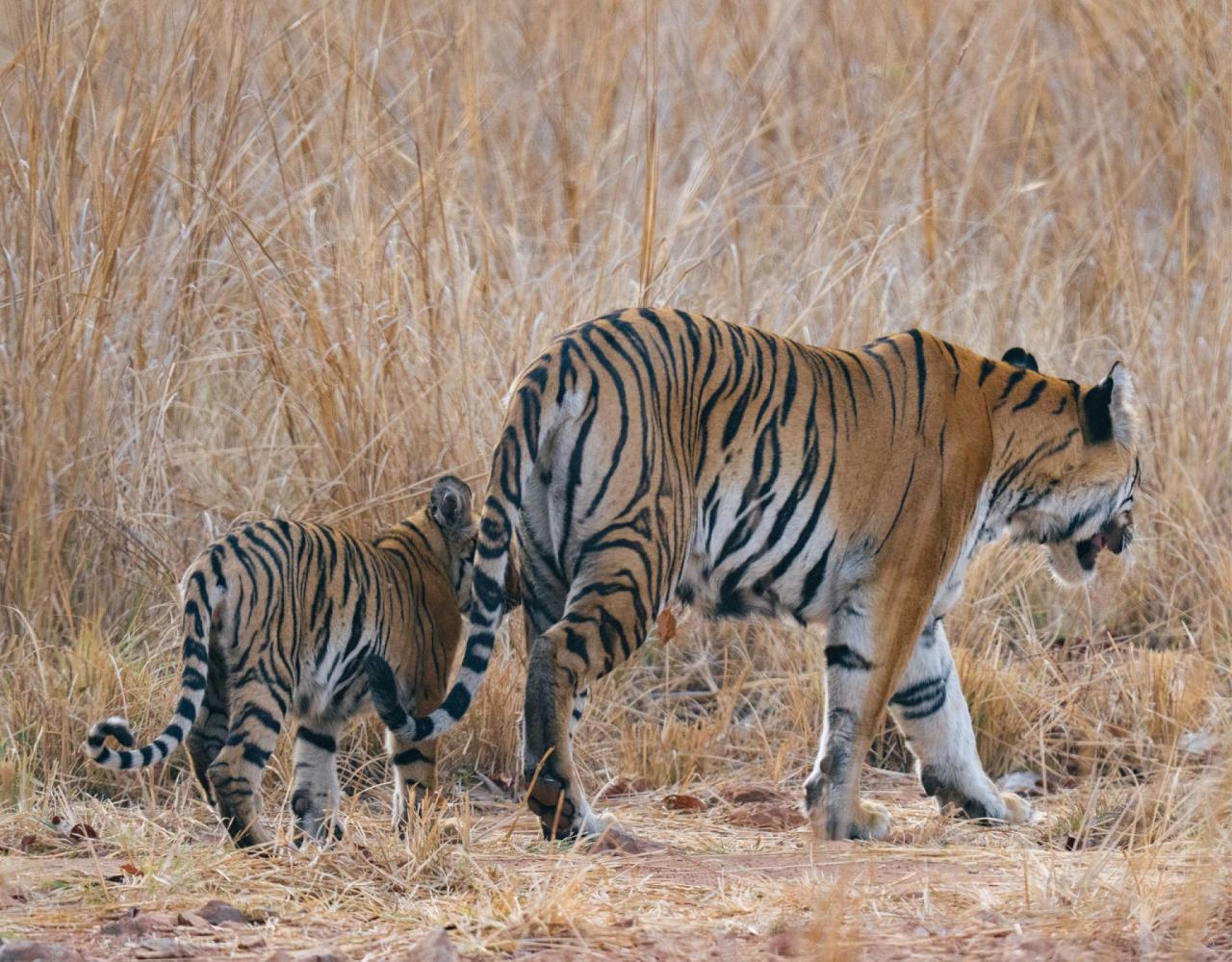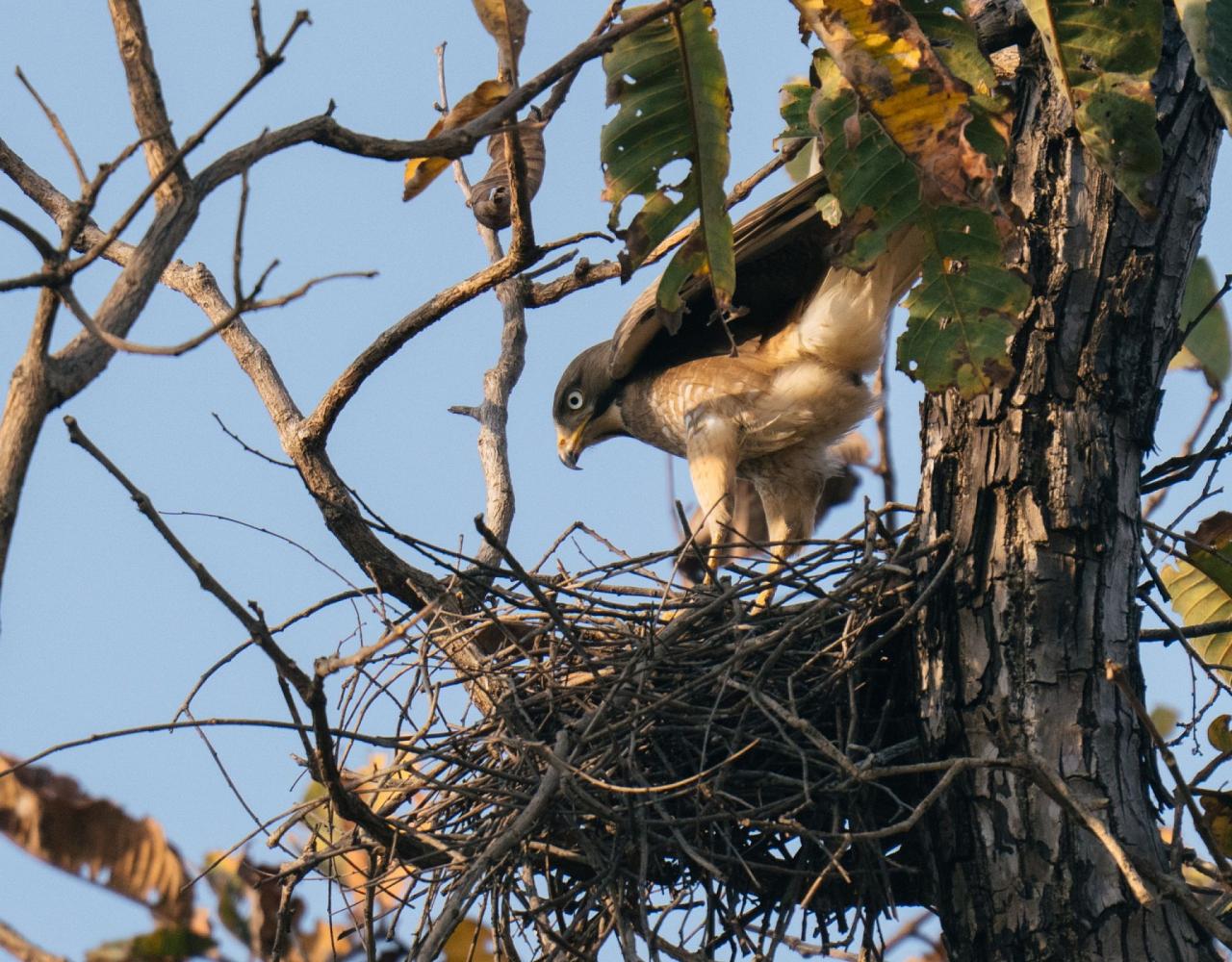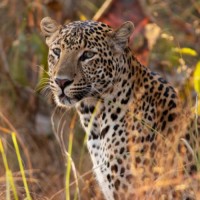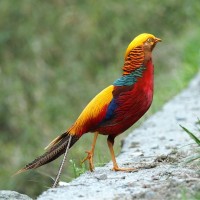- Overview
- Full Itinerary
- Photo Gallery
- Costing
- Travel Details
- Trip Reports
- Guide
- Know Before You Go
- Other Trips You May Like
India’s magnificent natural diversity attracts nature enthusiasts from around the globe. The beauty and power of the Tiger and the brilliance of the Indian Peafowl are jewels in the crown of an incredibly diverse suite of wildlife. Our recent India tours have been off the charts and so exciting, with prolific sightings of birds and mammals, giving us “National Geographic” moments again and again. The cultural diversity adds a great deal to the experience and makes India a must see destination for all.
Our Birds, Tigers & the Taj Mahal tour is the best choice for an introduction to India’s natural and cultural diversity, birds, and beauty. The tour is designed to see and experience rural India with a mix of iconic architectural treasures blended with time in treasured parks and reserves. Our tour has been carefully crafted to offer a diversity of landscapes, flora, and fauna and takes in two of the best and most memorable national parks. The food that we experience, the landscapes and natural diversity that is presented on this tour make it a memorable one from every point of view —take a peek!
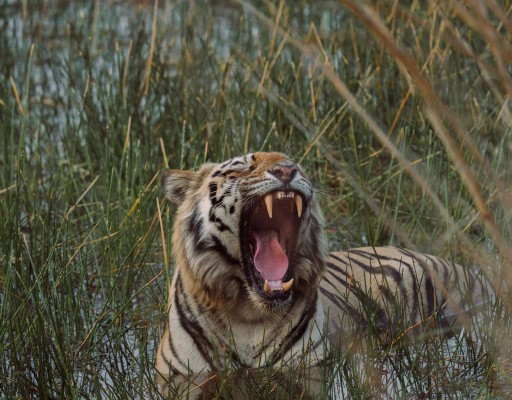


Tour Highlights
- Visit Ranthambhore and Kanha National Parks, some of the top places in India to see Bengal Tigers in the wild
- Discover the beautiful birds of Asia, from the colorful Indian Roller and Asian Green Bee-eater, to personable treepies, babblers, laughingthruses, and more
- Sample wetlands with stunning Painted Stork and possible Painted Snipe
- Enjoy sunrise views of the iconic Taj Mahal
- Boat on the wild Chambal River, stronghold for endangered birds and crocodiles
- Look for the smallest cat in the world, Rusty Spotted Cat, along with Jungle Cat and Asiatic Wild Cat
- Find impressive raptors on the wing
- Look for Indian Leopards in Jhalana and Indian Wild Dog (Dhole) in Kanha
- Explore and bird in unique ecosystems—the ravines of Chambal, the semi-arid scrubland forest in Kaila Devi and Ranthambhore, and the Sal (Shorea robusta) forest in Kanha
- Look for Asiatic Gray Wolf, Striped Hyena, Indian Fox, and Sloth Bear in Kaila Devi sanctuary in the buffer zone of Ranthambhore National Park, an amazing place all of its own
Trip Itinerary
Itineraries are guidelines; variations in itinerary may occur to account for weather, road conditions, closures, etc. and to maximize your experience.
Tues., Jan. 27: Arrivals in New Delhi | Old Delhi
Welcome to India! We know that many of you will elect to arrive a day early to rest up from your travels. Several flights also arrive at dawn. You can simply rest, but for those that wish to explore, on arrival take in the vibrant life of this bustling city and enjoy a privately guided walking tour in Old Delhi, also known as Shahjanabad. This is a great chance to take photographs, pick up some spices or local crafts and sense the rhythm of busy city life. Since we can’t check into our hotel until after 2:00 PM, this is a great way to fill that time. We return so that you can rest in the afternoon. As a group we plan to meet up at 7:00 PM to meet our fellow travelers and guides for a welcome dinner and an overview of the journey ahead.
Accommodations near the airport, New Delhi (D)
Wed., Jan. 28: Drive to Chambal River | Chambal River Safari Lodge
After breakfast, we drive out of the city and into the Indian countryside at the Chambal River area, about a five-hour trip but well worth the effort. Our lodge is a favorite, set in a peacful rural area and hosted by a family who share time-tested recipes for delicious food and specialty home recipes we do not find elsewhere. The accommodations are simple cottages and dining is in the estate house. After settling in, we have the afternoon to enjoy a bird walk around the property, looking for birds such as Gray Francolin, Indian Peafowl, Indian Black Robin, three species of parakeets—Alexandrine, Rose-ringed and Plum-headed—Yellow-footed Green-Pigeon, and White-throated Kingfisher.
We welcome the evening with a delctable dinner at the lodge and a chance to savor the night sky on new terrain.
Accommodations at The Chambal Safari Lodge (B,L,D)
Thurs., Jan. 29: Sunrise at the Taj Mahal | Lodge Birding
This is a memorable day! Before dawn, we drive to Agra for a privately guided tour of the Taj Mahal. The drive is about an hour, and we leave early as sunrise light is so gorgeous on the marble dome of this mausoleum built by Mughal emperor Shah Jahan to honor his wife, Mumtaz Mahal. We find that crowds are fewer if we arrive close to sunrise. We walk around the site to experience this 42-acre UNESCO World Heritage Site complex and marvel at its beauty. It was built between 1631 and 1648 and is one of the most admired architectural wonders of the world. It is located on the banks of the Yamuna River, so we may also see some swallows and other species flying around. Precious stones, red sandstone, and tile work are intricate and impressive at the site. We celebrate with a savory meal and learn how this art form continues today with modern-day tile work; for those that wish, you can make purchases and vendors can ship your treasures home.
We return to our lodgings in the quiet haven at Chambal River Safari Lodge, stopping on the way at a village where we get to see the rural landscape and also an interesting set of temples. We also learn more about the history of our lodge, which fell into disrepair after centuries of acclaim as a trading center, but was rescued by family members that inherited the property and brought it back to life with attention to detail and loving care. They also have a commitment to conservation, supporting a private foundation and using sustainable practices to tend to the woodland and farmlands surrounding the estate. After dinner this evening, we take a night walk on the grounds looking for resident owls and possible mammals such as Common Palm or Small Indian Civets.
Accommodations at The Chambal Safari Lodge (B,L,D)
Fri, Jan. 30: Chambal River Boat Tour | Sarus Cranes
Early this morning venture out to the Chambal ravines, a drive of about an hour, where near the boat ramp we look for Rufous-fronted Prinia, Crested Bunting, White-capped Bunting, Pale Martin, Sand Lark, and other species. The highlight of our morning then begins: a boat safari on the Chambal River. This is a big river, with quiet waters and impressive cliffs that frame it, and from our boat we get close-up views of endangered Indian Skimmer and another agile flyer, the Black-bellied Tern. We may also see River Lapwing, Red-crested Pochard, Brown Crake, Red-naped Ibis, and Pallas’s Gull. We also look for Gharial and Marsh Crocodiles; the Chambal River is an important conservation stronghold for these species. If we are lucky, we may see the Gangetic Dolphin as well.
After a delicious lunch at the lodge, we head to an area to search for Sarus Crane, the tallest flying bird in the world. These elegant birds can reach five feet in height and have a wingspan of nearly eight feet! Once a common sight in India, their population numbers have dwindled to less than 20,000 individuals.
After a lovely dinner featuring traditional family recipes, we tally up our sightings and for those that wish, savor the evening around a cozy campfire.
Accommodations at The Chambal Safari Lodge (B,L,D)
Sat., Jan. 31: Chambal | Kaila Devi Sanctuary
After breakfast, we drive for a full morning to reach Kaila Devi Sanctuary, near to the famous Kaila Devi Temples in colorful Rajisthan. We’ve chosen to stay at the Ramathra Fort, another spectacular oasis with wonderful hospitality, unparalleled views of Kalisil Lake surrounded by farmland, a historic 350 year-old fort, and excellent wildlife opportunities. Enjoy lunch and get settled in and enjoy the birds on the grounds.
This afternoon, we drive out to look for mammals like the Indian/Asiatic Gray Wolf, Striped Hyena, Asiatic Jackal, Jungle Cat, Rusty Spotted Cat, Asiatic Desert Cat, and with luck the more elusive Caracal. We may also find Indian Leopard in this landscape. We return after dark this evening to peace and quiet in this wilderness setting and views of the night sky around a campfire up on the forts battlements.
Accommodations at The Ramathra Fort; Luxury boutique safari tents (en-suite and fan-cooled) (B,L,D)
Sun., Feb. 1: Ramathra Fort | Kaila Devi Sanctuary
Ramathra Fort is a beautiful oasis, family run and hidden from the main map—now a luxury property in an historic fort that overlooks the rural village of Ramathra on the edge of the Kaila Devi sanctuary! For many this is the highlight of our trip. Early and mid-afternoon into evening we take jeep explorations in the Kaila Devi sanctuary, spotlighting for mammals as we return. In addition to the mammals listed above, there are many birds to see, including possible nightbirds and owls such as Brown Fish-Owl, Spotted Owlet, Rock Eagle-Owl, and Indian Nightjar; daytime raptors such as Shikra, Short-toed Snake-Eagle, Crested Serpent-Eagle, Common Buzzard, and Oriental Honey-buzzard soar overhead. We enjoy scanning for water birds such as Knob-billed Duck and Black-tailed Godwit, and forest and shrub species such as Sirkeer Malkoha, Common Hawk-Cuckoo, Rock Bush-Quail, Jungle, Ashy, and Plain Prinias, Common, Large Gray, and Tawny-bellied Babblers, Rufous-tailed Lark, Ashy-crowned Sparrow-Lark, Sulphur-bellied, Greenish, and Hume’s Warblers, and Bay-backed Shrike.
Accommodations at The Ramathra Fort; Luxury boutique safari tents (en-suite and fan-cooled) (B,L,D)
Mon., Feb. 2: Kaila Devi Sanctuary – Ranthambore National Park
After breakfast this morning, we drive a full half day to Ranthambore National Park, and we aim to have lunch there and settle into our lodgings. After this, we enjoy our first safari drive into the park in an open 4x4 jeep, each seating 4 people with a forest guide.
Ranthambore is one of the best tiger reserves to see Bengal Tiger. Of all of the photographs of wild tigers that are seen in print and eletronic media, over 50% are from Ranthambore. Yet until the 1980s, it was very difficult to see a tiger in the wild here. It was the tireless efforts of the Late Dr. Fateh Singh Rathore that turned the tide and made this park the way it is now. He convinced the then Prime Minister and later the administration to release funds to relocate villages from within the park to outside the park and also convinced the villagers to accept that the park need to be left undisturned for the wildlife. Gradually the wildlife came back and tigers and other wildlife were sighted in day light. The park has seen many ups and downs in the population of wildlife and condition of habitat. But now it is undoubtedly one of the best places in the world to see a wild tiger.
The park is best explored from a jeep and within its 500+ square mile area, the management allocates a nearby route for us for each drive; they are varied and we need to stick to our assigned areas when we are out on safari. We have chances to visit several areas.
Accommodations at The Ranthambore Bagh; Air-conditioned Rooms. (B,L,D)
Tues., Feb. 3 & Wed., Feb. 4: Two Full Days in Ranthambore National Park
We have two full days to enjoy exploring Ranthambore National Park. We enjoy one morning and one afternoon safari each day. We depart early to be out when wildlife viewing is at its best. Mid-day we take a relaxing break back at the hotel. We go back out in the afternoon, each time with a local ranger in our vehicle. We move around different sections of the park that we have permits for so the landscape and sightings change each day. The park has water courses including some man-made lakes among its dry deciduous woodlands, so birds are plentiful. We may see Sambar Deer, Chital Deer, Indian Wild Boar, Hanuman Langurs, Golden Jackal, and with luck some of the smaller cats such as Jungle Cat or Caracal as well as our main goal, the Bengal Tiger.
In addition to being such a fine place to spot tigers and other mammals, Ranthambore is renowned for its birding opportunities and hosts over 320 species. Each day we explore a different part of this wooded park, driving to small ponds and lakes where wildlife seeks water, and birds abound. Witness a good selection of Asian bird families including pipits, larks, bee-eaters, shrikes, cuckoo-shrikes, wagtails, munias, and more. Water birds are quite numerous, including kingfishers, old-world sandpipers, herons, egrets, and a variety of geese and ducks. We should find Crested Serpent Eagle, Indian Gray Hornbill, White-breasted Waterhen, Bronze-winged Jacana, White-throated Kingfisher, Indian Scops-Owl, Yellow-crowned Woodpecker, Greater Coucal, Indian Paradise-Flycatcher, White-browed Fantail, Rufous Treepie, and Rose-ringed Parakeet … to name a few.
A sense of history is ever present in the park, as the area was once considered as one of the famous and former hunting grounds of the Maharajas of Jaipur. Ruins from the royal era of Rajasthan date back to the 10th Century and include the Ranthambore Fort and the Ganesh Mandir temple.
Our most comfortable lodgings are a great place to land after a full day and we take time nightly to tally up our growing species list. Meals are thoughtfully prepared and once again our food is sourced locally as much as possible.
Accommodations at The Ranthambhore Bagh; Air-conditioned Rooms. (B,L,D)
Thurs., Feb. 5: Ranthambore | Jaipur | Jhalana National Park
We have about a three-hour drive to Jaipur and we plan to arrive in time for an afternoon jeep safari in Jhalana, a stronghold for Indian Leopard, hosting high numbers of this often elusive species. This is a small park, about 21 square miles, set in the rugged Aravalli Hills. Despite being close to a bustling city, leopards roam freely here, and it is also possible to spot White-footed or Desert Fox, and Striped Hyena along with the iconic wild Indian Peafowl. We watch for small raptors such as Shikra and Eurasian Sparrowhawk, too. We hope to find colorful Asian Green Bee-eater, Large Gray and Jungle Babblers, Red-breasted Flycatcher, Purple Sunbird, Common Woodshrike, Black Drongo, Black-rumped Flameback, Brown Rock Chat, Common Hoopoe, Asian Koel, White-tailed Iora and other species.
Our accommodations tonight are at a boutique hotel with traditionally decorated rooms, each room unique with modern amenities. The hotel is known for its hospitality and it has a swimming pool for those that wish to cool off with a dip or get some exercise.
Accommodations at The Ikaki Niwas (B,L,D)
Fri., Feb. 6 Jaipur | Raipur | Kanha National Park
Today morning, if time permits once we know our flight time, we enjoy a very short tour of the spectacular Amer Fort. This morning we fly to Raipur and on arrival are met and driven to Kanha National Park, one of the most famous and treasured national parks of India. We have five nights here at the beautiful Shergarh Tented Camps. Many consider Kanha in India to be the equivalent of Yellowstone in the USA, replete with big mammals in a healthy, complete ecosystem.
Our intimate and lovely Africa-style tented camp is located near to the park in a natural forest with a number of birds on the grounds. The tents are spacious and fan-cooled and have adobe-like porches for sitting and watching the wildlife. In the evening, hot water bottles and extra blankets and duvets are provided to keep us warm, as needed.
The camp is run by the local community with active participation from the owners and a team of naturalists. Shergarh has running hot water, laundry facilities, and for those who need to get in touch with their family and friends there is an area that is equiped with wifi. Shergarh serves a mix of Indian and continental cuisine. We gather for meals in a lovely dining area adorned with local art and furnishings. A fireplace is lit in the evenings and everyone gathers around to share conversation and learn from each other over tea and drinks.
Shergarh also supports a couple of artists from the local Gond community whose art (Gond Art) is well known in some parts of the world. For those who are interested, Shergarh can call the artists and we can meet the artists, as well as buy an art-piece directly from the artist.
Accommodations at The Shergarh Tented Camp (B,L,D)
Sat., Feb. 7 – Mon., Feb. 9 Three Full Days in Kanha National Park & Tiger Reserve | Daily Safari Drives
For the next three days, we enjoy early morning safari and afternoon drives, again in open 4x4 jeeps with a private guide. The park is about 385 square-miles in area (plus a buffer area, which is another 385 square miles) and it is divided into four zones that are open to tourists. It is a wooded and beautiful landscape, set in the central Indian highlands. It has been protected in some form since 1879. Crystal clear streams and lush meadows occur on our routes, and create high biodiversity edged by forest. The landscape inspired Rudyard Kipling to write his famous Jungle Book.
Kanha is home to Bengal Tiger, Leopard, the rare and severely endangered Indian Wild Dog (Dhole), Asiatic Jackal, Jungle Cat, Sloth Bear, the endemic hard-ground Swamp Deer, Sambhar, the largest wild bovid—Indian Gaur, Bengal Fox, herds of Spotted Deer, Wild Boar, and other mammals. Kanha is a beautiful park with plentiful saal trees and is home to over 300 species of birds like Changeable Hawk-Eagle, Crested Serpant-Eagle, Brown Wood-Owl, Mottled Wood-Owl, Scarlet Minivet, Brown-cheeked Fulvetta, Indian Paradise Flycatcher, Red Spurfowl, Greater Racket-tailed Drongo, endemic Indian Scimitar-Babbler, and others.
On one afternoon we may enjoy a visit to the villages in the buffer area of the park and a walk through the buffer zone learning about the flora of the park. We see a number of interesting birds while learning more about rural culture.
On the other afternoons we return for another safari drive, with high hopes for finding many wildlife sightings, with time to appreciate bird and animal behavior and the beauty of the landscape.
Accommodations at The Shergarh Tented Camp (B,L,D)
Tues., Feb. 10 Kanha | Flight to New Delhi | Departures
After breakfast, we drive back to Raipur airport, about a four-hour drive, to connect to our afternoon flight to New Delhi. Our tour concludes at the airport and our flock disperses. Those that wish can continue on to International flights, but please do not book these before 8:00 PM as you need to be at the airport three hours ahead of your departure. (B,L)
Wed., Feb. 11 Optional New Delhi Sightseeing | City Highlights
If you plan to overnight on February 10 to rest up before your international flight, or if you want to see a bit of the city, we can book a room for you and help you get settled at the Claridges Hotel on the night of February 10. This hotel is about a 45 minute drive from the airport but in a good location for morning sightseeing ahead of outbound afternoon or evening flights. On a morning city tour, see a bit of New Delhi and sites such as the Red Fort and the Mughal monument of Humayun’s Tomb.
Accommodations on February 10 at The Claridges New Delhi (B,L)
Cost of the Journey
The cost of the journey is per person, based on occupancy: $9690 DBL / $11,360 SGL, from New Dehli.
The cost includes: all accommodations; all meals as stated in the itinerary; group airport transfers; ground transportation; professional guide services; park, preserve, and other activity fees; and miscellaneous program expenses. Internal flights are included in the cost of the tour.
NEW! all tips other than your NJ guide (optional) and local guide are included (this includes tips for your driver, lodge and staff, day activities, meals and other services).
The cost does not include: roundtrip airfare to and from New Dehli, or items of a personal nature such as laundry, telephone charges, beverages from the bar, or guide gratuities.
Travel Details
Please plan to make air travel plans only after the minimum group size has been met. We will send you a confirmation email as soon as the trip has been confirmed.
Arrival and Departure Airport: Indira Gandhi International Airport (DEL) in Delhi
Arrival Details: Please plan to arrive January 27, 2026, by 5:00 PM in order to join the group dinner
Departure Details: Plan flights to depart February 10, 2026, after 8:00 PM. You may also choose to overnight near the airport and depart at your leisure on February 11.
Travel Tips: If you arrive early to rest up from your travels or explore Delhi, we can book you an early night at our first night tour hotel, the Roseate House Hotel, near the airport. The hotel cost is approximately $280-300/night. A transfer from the airport to the hotel, if you arrive early, will cost about $55/transfer. The hotel is located in the Aerocity area near the airport and has many restaurants and shops.
If you are interested in a sightseeing tour of Delhi or a half day of birding, we can arrange for an additional cost for those who arrive early.
Entry Requirements: See "Essential Information" section under the "Know Before You Go” tab.
Browse below for trip reports and species lists from past versions of this and other tours from this destination.
India
- January 2006
- March 2012
- January 2020
- November 2023
- November 2024
- February 2025 (Big Cats)
-
Stephen Grace

Stephen is an award-winning author, natural history educator and conservationist. He has also contributed to documentary films, and his nature photography has been widely published. Over the past two decades, he has introduced groups of travelers to nature and culture in destinations as varied as Uganda, New Zealand and Alaska.
After moving from Colorado to the Oregon coast, Stephen was captivated by the sight of a Tufted Puffin carrying fish back to its burrow, and the first time he heard a Swainson’s Thrush sing, he knew his life would never be the same. He has been studying birds and sharing their beauty with people ever since.
Formative experiences during Stephen’s journey as a naturalist have included tagging along as a teenager with his grandparents in Madera Canyon, where he absorbed their love of Arizona’s sky islands; helping people with different ability levels experience the Yellowstone ecosystem when he lived in Jackson Hole, Wyoming; and sailing aboard a historic schooner to share the wonders of the Salish Sea with students.
Now based in Port Townsend, Washington, Stephen explores the Pacific Northwest by backpacking, paddleboarding, snorkeling, biking, trail running, and skiing. His wide-ranging natural history pursuits include coring trees to count their growth rings, identifying bats by analyzing their biosonar signals, hunting mammoth tusks in Pleistocene bluffs, searching for the elusive Rubber Boa, preserving native prairie, raising awareness about plankton, and leading sea slug safaris.Other trips with Stephen Grace
-
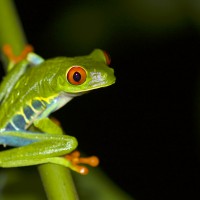 Costa Rica: Birding Across the Continental Divide Arenal Observatory & More! - FULL! See our Monteverde departure in March!February 16 - 25, 2026
Costa Rica: Birding Across the Continental Divide Arenal Observatory & More! - FULL! See our Monteverde departure in March!February 16 - 25, 2026 -
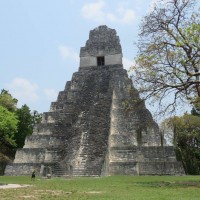 Best of Guatemala: Birding & Culture FULL! See our March Belize Short & Sweet trip.March 10 - 20, 2026, w/Tikal extension
Best of Guatemala: Birding & Culture FULL! See our March Belize Short & Sweet trip.March 10 - 20, 2026, w/Tikal extension -
 Trinidad & Tobago: Incredible Birds & WildlifeApril 10 - 19, 2026
Trinidad & Tobago: Incredible Birds & WildlifeApril 10 - 19, 2026 -
 Spring in Spain: Birding & NatureApril 22 - May 5, 2026
Spring in Spain: Birding & NatureApril 22 - May 5, 2026 -
 Olympic Peninsula Spring ExplorerMay 11 - 18, 2026
Olympic Peninsula Spring ExplorerMay 11 - 18, 2026 -
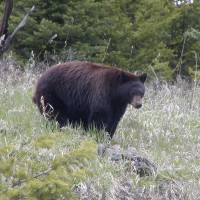 Yellowstone: Birds, Bears & Wildlife FULL - See our June 11th departure!June 4 - 10, 2026
Yellowstone: Birds, Bears & Wildlife FULL - See our June 11th departure!June 4 - 10, 2026 -
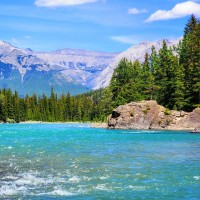 Into the Heart of Canada's Wild RockiesJune 18 - 26, 2026
Into the Heart of Canada's Wild RockiesJune 18 - 26, 2026 -
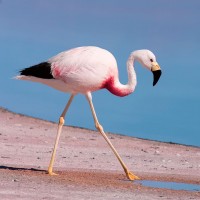 Peru's Avian & Archaeological WondersJuly 10 - 20, 2026, w/Machu Picchu extension
Peru's Avian & Archaeological WondersJuly 10 - 20, 2026, w/Machu Picchu extension -
 Spain: Birds, Bears, Wolves & Total Solar Eclipse FULL - See our spring, summer & fall departures!August 3 - 14, 2026
Spain: Birds, Bears, Wolves & Total Solar Eclipse FULL - See our spring, summer & fall departures!August 3 - 14, 2026 -
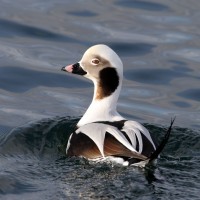 Olympic Peninsula Fall ExplorerSeptember 10 - 17, 2026
Olympic Peninsula Fall ExplorerSeptember 10 - 17, 2026 -
 Southern India’s Western Ghats: Global Hotspot for BiodiversityNovember 7 - 21, 2026, w/Andaman Islands extension
Southern India’s Western Ghats: Global Hotspot for BiodiversityNovember 7 - 21, 2026, w/Andaman Islands extension -
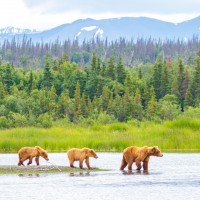 Aleutian Islands Adventure with Dutch Harbor & Kodiak IslandJune 15 - 25, 2027
Aleutian Islands Adventure with Dutch Harbor & Kodiak IslandJune 15 - 25, 2027
-
Essential Information +
Pace & Protocols +
Packing List +
Suggested Reading List +
Useful Links +
Photo credits: Banners: Tiger (Nancy Siepman), Indian Peafowl (Nancy Siepman), Indian Roller (Wes Larson) THUMBNAILS: Rose-ringed Parakeet (Nancy Siepman), Jungle Cat (Tina Greenawalt), Bengal Tiger (Wes Larson)




